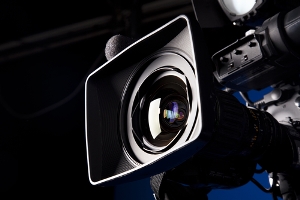How Tony Elliott mastered dimension-bending in TIFF short

Tony Elliott knows something about dimension bending from his screenwriting duties on the popular sci-fi series hit Orphan Black.
So when he turned to directing his second short film, Entangled, he ended up with a clever split-screen sequence.
Entangled focuses on Erin, a young woman played by Christine Horne who is forced to care for her catatonic lover after one of his secret experiments went badly wrong.
The idea to portray alternate dimensions came to Elliott one night when he had left the Orphan Black writers room and felt rushed to hammer out an idea for a short film as a deadline loomed.
“I was pulled in every direction. I thought, I wish there was more of me,” Elliott told Playback Daily ahead of Entangled debuting at the Toronto International Film Festival as part of the Short Cuts Canada sidebar.
Suddenly, it dawned on Elliott that Erin in a split-screen sequence where she is doing the exact same movements in two different locations could illustrate how far she would go to help someone she loved as she discovered the mystery of his science experiment.
That called for more than the usual split screen where the action in either half is simultaneous. More than the opposite mirror image would be displayed.
Elliott decided he would capture the exact same actions by Erin, even down to her dialogue and heavy breathing, with the exact same camera movements.
“I had to make every beat make sense. I had to convey what it meant on the screen so my director of photography and team could know what it was,” he said.
And he had to do it all during a three-day shoot for Entangled.
The first half of the screen’s narrative action was shot in a barn. Then the next day, back in Toronto, Elliott replicated the exact same action from the day before.
That called for Elliott, Horne, the DOP and the rest of the camera crew to watch the previous day’s footage in playback and to follow Erin’s emotional through-line.
Horne would then rush from the video screen to the set to replicate her movements and emotions.
“We watched the playback as we shot, we’d watch it and shoot, and then watch the playback again and Christine would rush from the video screen to the set again,” Elliott recalled.
“It was a very trippy experience to do that,” he added.
– Camera image courtesy of Shutterstock

 The definitive CDN broadcast and production resource.
The definitive CDN broadcast and production resource.










